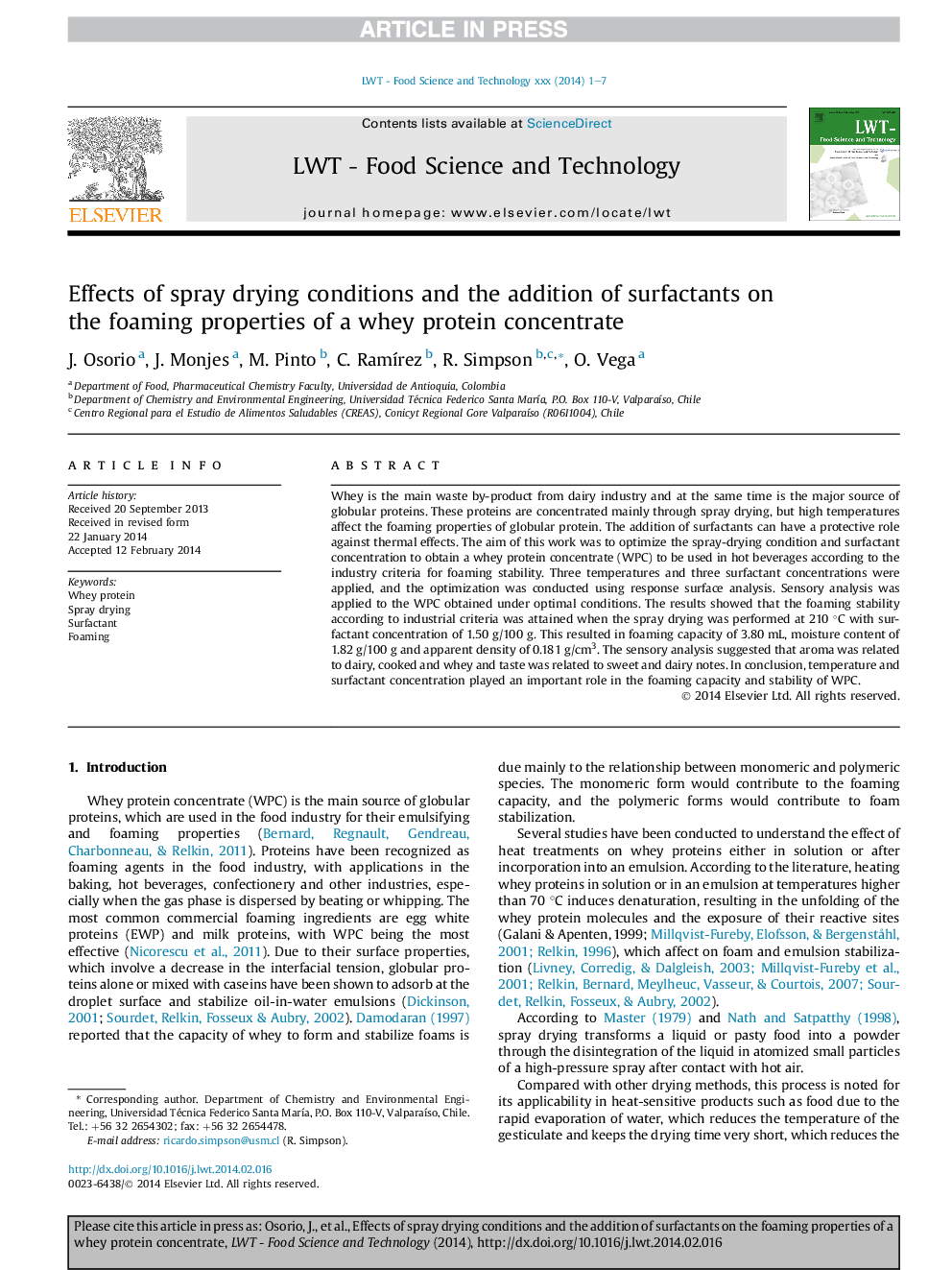| Article ID | Journal | Published Year | Pages | File Type |
|---|---|---|---|---|
| 6404038 | LWT - Food Science and Technology | 2014 | 7 Pages |
Abstract
Whey is the main waste by-product from dairy industry and at the same time is the major source of globular proteins. These proteins are concentrated mainly through spray drying, but high temperatures affect the foaming properties of globular protein. The addition of surfactants can have a protective role against thermal effects. The aim of this work was to optimize the spray-drying condition and surfactant concentration to obtain a whey protein concentrate (WPC) to be used in hot beverages according to the industry criteria for foaming stability. Three temperatures and three surfactant concentrations were applied, and the optimization was conducted using response surface analysis. Sensory analysis was applied to the WPC obtained under optimal conditions. The results showed that the foaming stability according to industrial criteria was attained when the spray drying was performed at 210 °C with surfactant concentration of 1.50 g/100 g. This resulted in foaming capacity of 3.80 mL, moisture content of 1.82 g/100 g and apparent density of 0.181 g/cm3. The sensory analysis suggested that aroma was related to dairy, cooked and whey and taste was related to sweet and dairy notes. In conclusion, temperature and surfactant concentration played an important role in the foaming capacity and stability of WPC.
Related Topics
Life Sciences
Agricultural and Biological Sciences
Food Science
Authors
J. Osorio, J. Monjes, M. Pinto, C. RamÃrez, R. Simpson, O. Vega,
